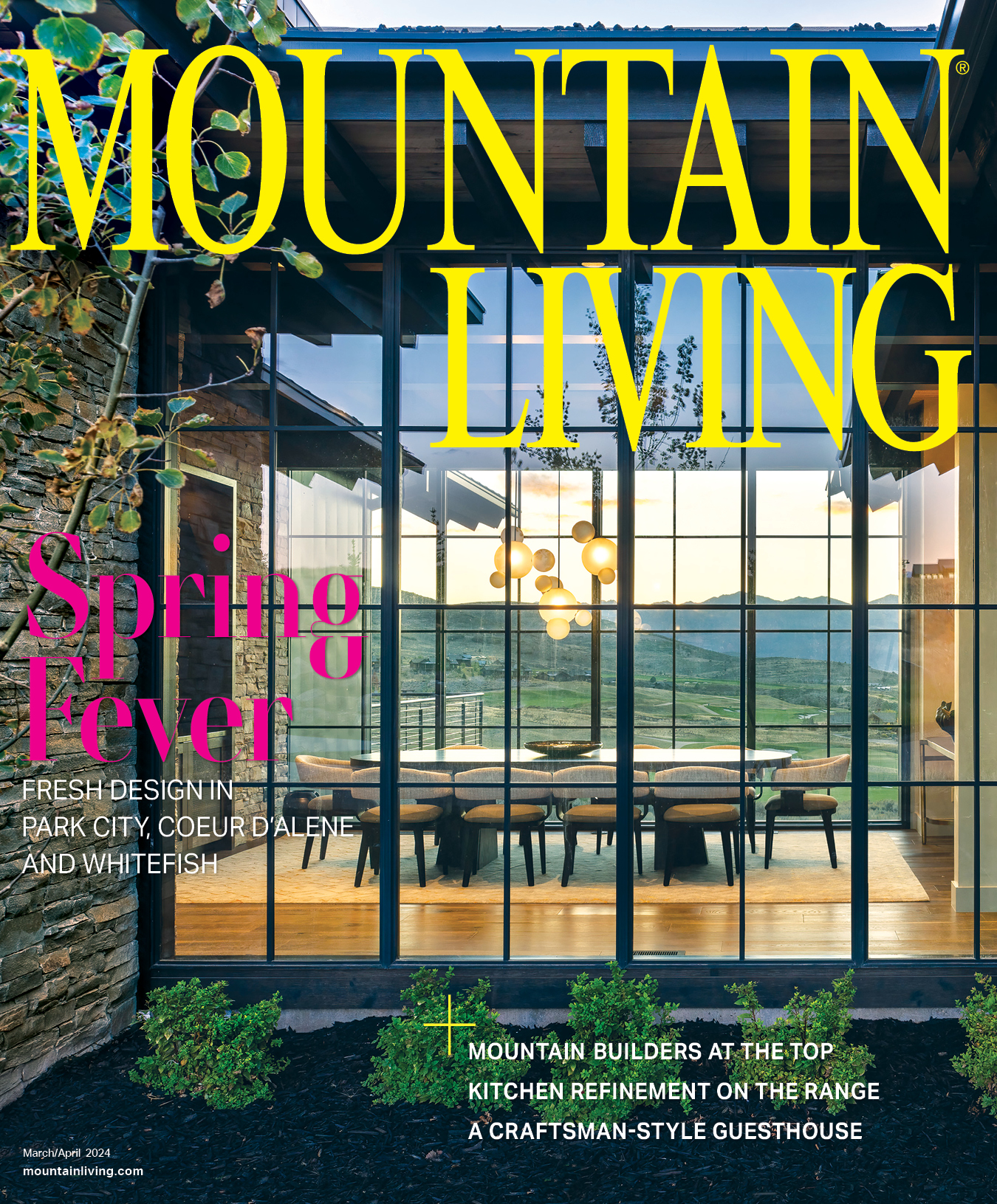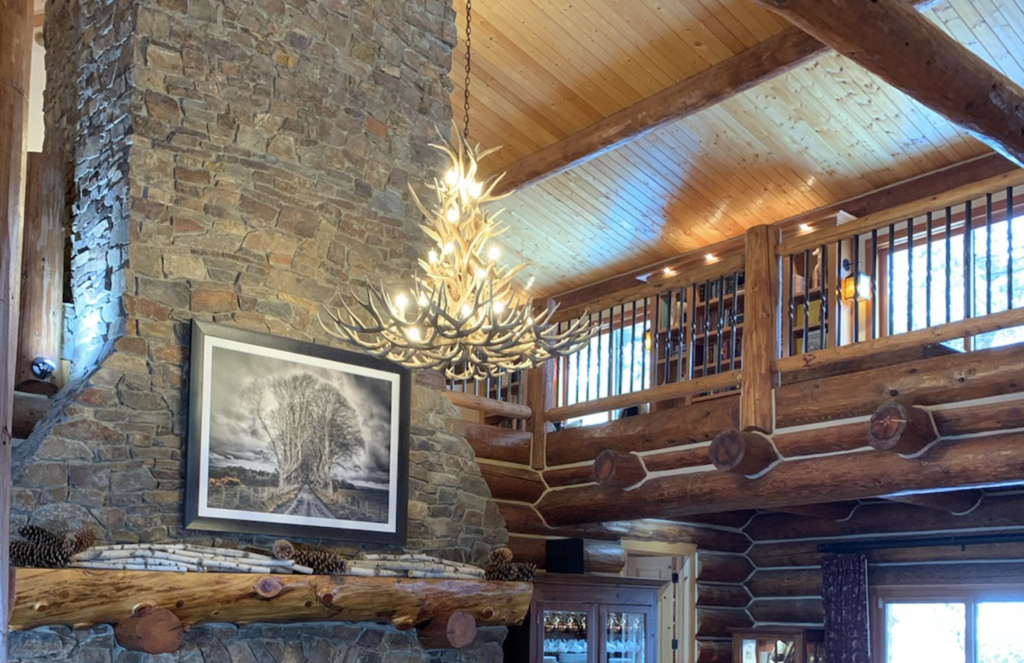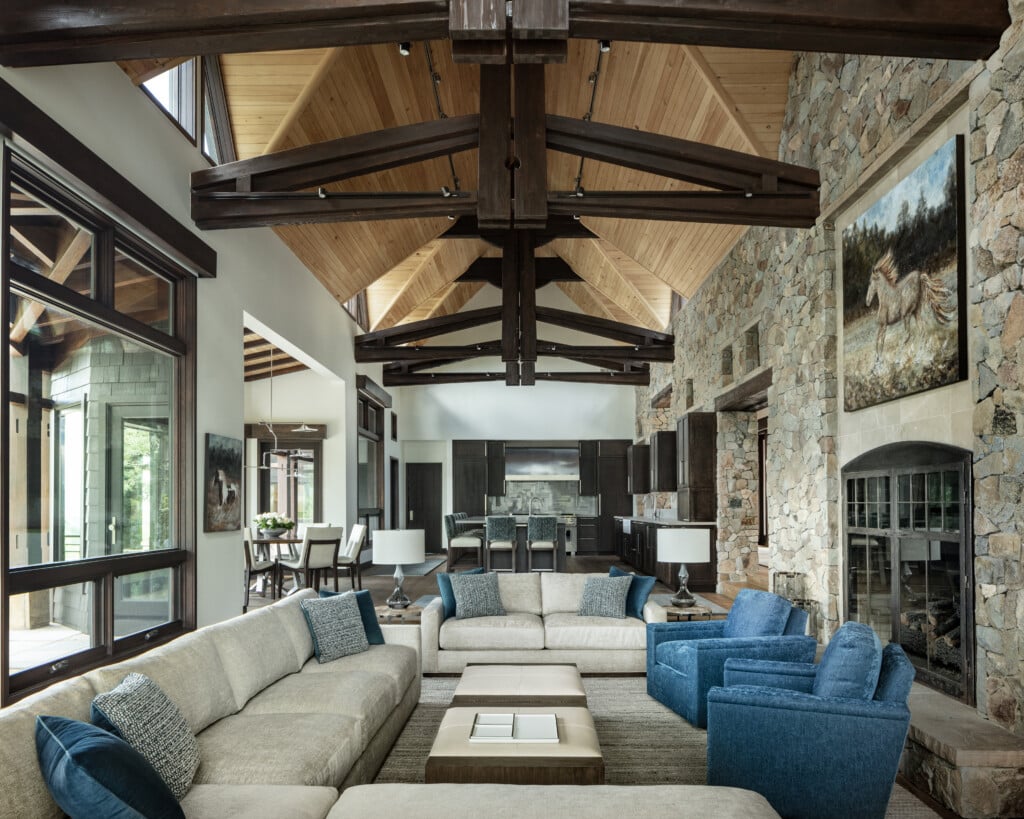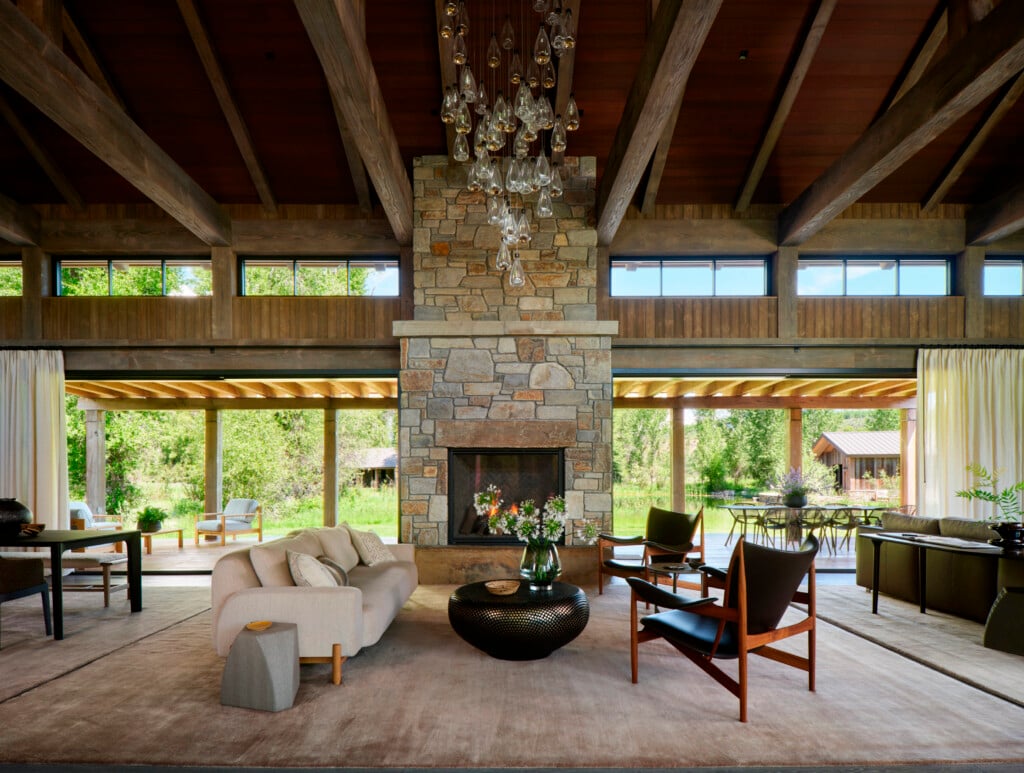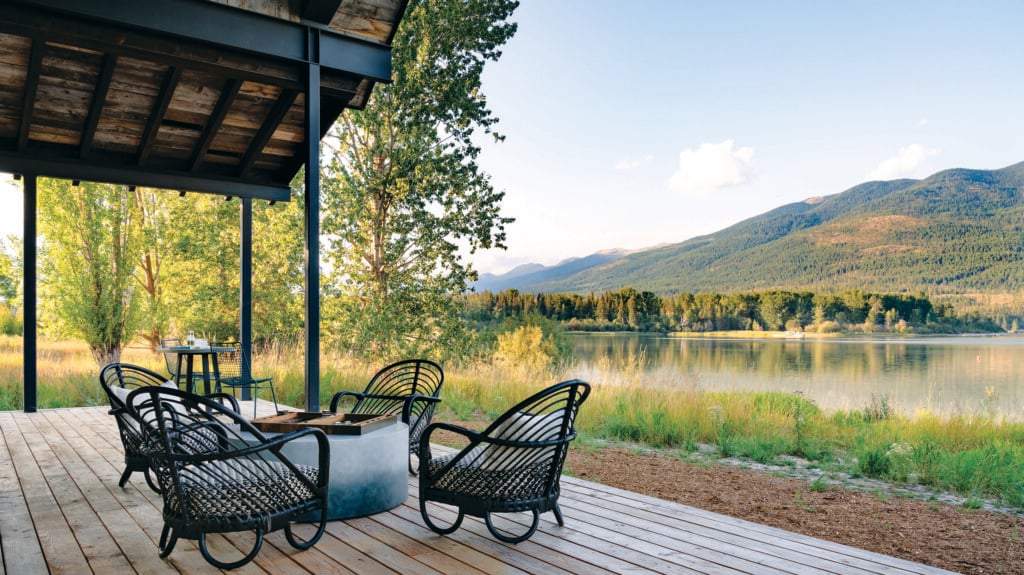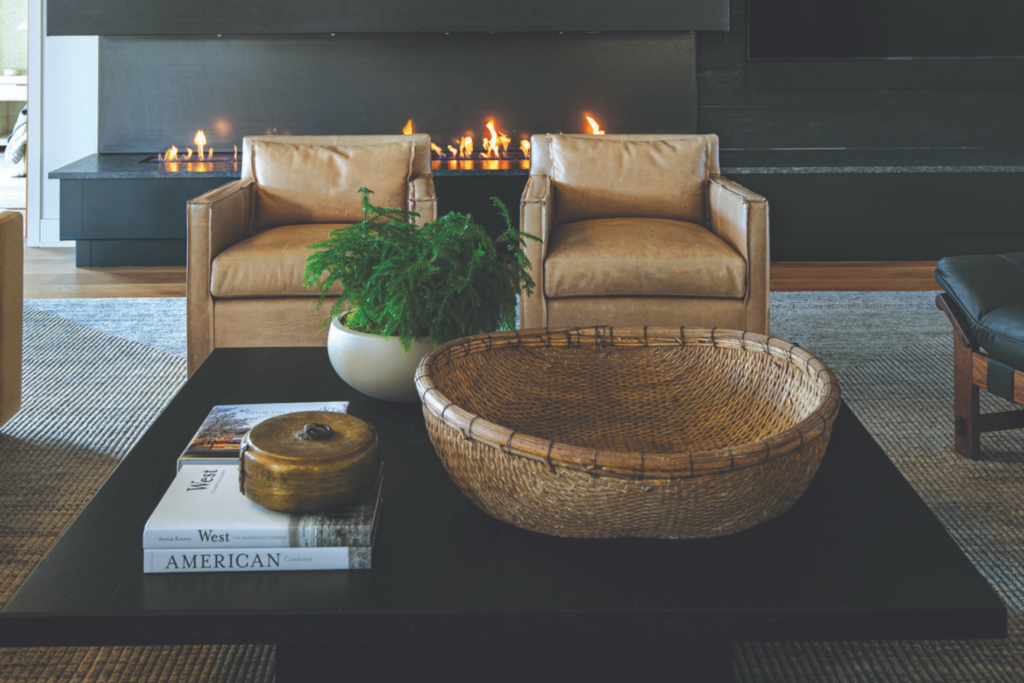How to Integrate Stone Effortlessly to Your Home
Three tips focusing on source, structural sensibility, and style of lay
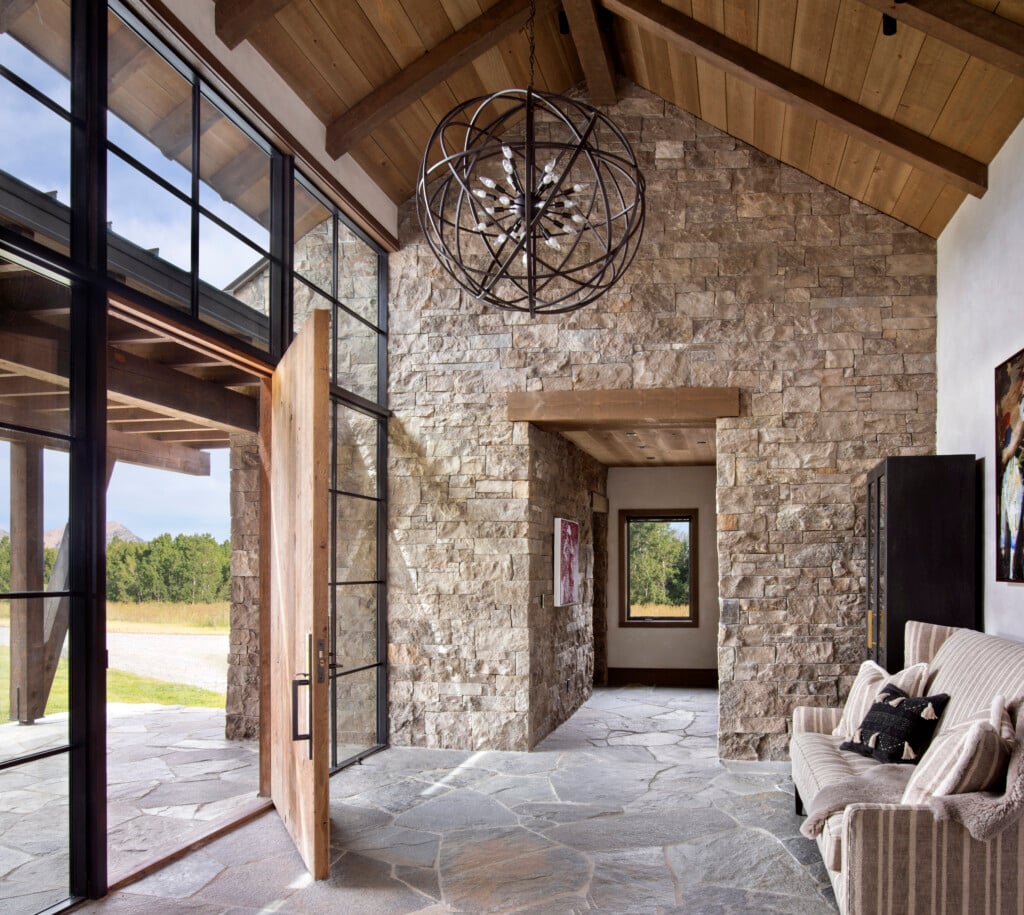
Stone masonry is a fundamental material in architecture and design, spanning vast applications across time, cultures, and locales. It is structural by nature, permanent in strength, tactile to the eye and touch, and a beautiful material to complement any design palette. But doing it well requires experience, consideration of detail, and time. When integrating stone into the design of your home, focus on these three things: the source, the structural sensibility, and the style of lay.
Source
Using local stone is a simple and profound way to tie a structure to its place. It makes your home literally a part of the land and brings in the natural colors and textures of your locale. For example, in the main image above Montana moss rock graces a Bozeman, MT home’s interior and exterior walls. To further the connection to place, the window wall reveals a continuity of material inside to out.
This iconic Upstate NY lake cottage features rich granite fieldstone, locally sourced, woven throughout the design.
Glacier boulders anchor this cabin in Northern Wisconsin. While sourced from a quarry, these types of stones are prolific in this part of the world and bring an immediate connection to the Northwoods.
Structure
In modern buildings, stone is rarely structural anymore. But your mind wants to see it as if it were…so design for it. Use traditional geometries where you can (arches, ledges, and lintels), pay attention to scale of stones (hierarchy of size low to high), and design other elements of a room accordingly (integrate ceiling beams to make a fireplace look like it’s holding up a room).
The fireplace above pulls out all the tricks with heavy mass, a structural sitting and arch stones. To finish it off, small hand stones and brick grace the space over the mantel.
In this home’s family living space, a white-washed stone mass anchors the living room and literally supports the ceiling structure. A natural sandstone lintel on the firebox furthers the structured composition.
Style
How stone is stacked, coursed, and detailed determines its look more than anything. And how its aesthetic compliments or contrasts other design elements in a space can have a profound effect. Ask your stone what it wants to be and mix it up!
Rustic, with a natural edge and mortar free, the stone in this living room contrasts the space’s otherwise modern context.
This stunning fireplace featuring Montana moss rock, with mortared joints and a white wash, amplifies this home’s clean Alpine vibe.
Granite fieldstone with heavily textured mortar brings an authentic Vintage Farmhouse vibe to this New York cottage.
Main image by Gibeon Photography
Justin Tollefson, AIA is a principal architect at Pearson Design Group, a Bozeman, Montana-based integrated architecture and interior design firm that offers a broad range of design aesthetics. View their profile or contact them at 406.587.1997.
Content for this article provided by Pearson Design Group.
